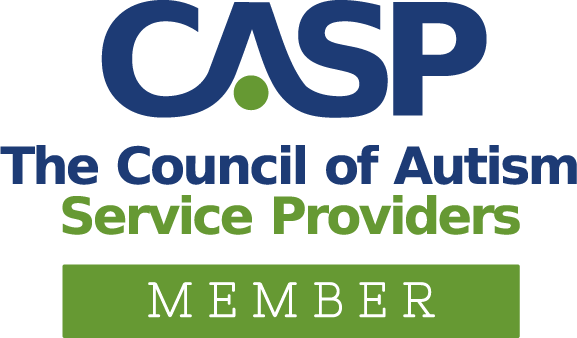Discriminative Stimulus is a technical term used to describe a stimulus or input that increases the likelihood of a response due to the client’s previous history of reinforcement in the environment of that stimulus, according to The American Psychological Association. Discriminative stimulus, often referred to by ABA providers as an SD, is an integral component of any ABA program, as these prompts facilitate positive behavior changes among learners on the autism spectrum.
When progressing through an impactive behavioral approach, like ABA therapy, also called Applied Behavior Analysis, the stakes are high, as the physical, mental, and emotional expansion and safety of developmentally unique clients are always a provider’s and caregiver’s top priorities. ABA therapy is a scientifically validated framework for teaching those with autism spectrum disorder (ASD) to develop life skills that improve their chances of success, community participation, and happiness in a way that works best for them.
Understanding ABA therapy and its concepts, like discriminative stimulus, can vastly improve your loved one’s outcomes with ABA and how they navigate their environments as children and later adults. Whether you’re a parent of a child or teenager with autism, an educator working with neurodivergent students, or an ABA provider supporting an individual through life with an ASD diagnosis, it is often an enriching experience, but it sometimes presents challenges.
In many cases, neurodivergent individuals can have trouble appropriately comprehending the mainstream world. Sometimes, these difficulties in understanding environmental cues in various circumstances lead to less favorable outcomes, such as a more isolated life, less autonomy, or even harm. Employing discriminative stimulus in ABA therapy can vastly improve your child’s ability to experience more predictability and make associations that help them thrive across experiences because they understand expectations more clearly.
In this blog by ABA Centers of America, we’ll explain what discriminative stimulus is in more straightforward terminology and how it works within a client’s ABA therapy plan so you can feel confident about using this principle with your kiddo or understand it as you observe it in ABA sessions.
So, join us as we unravel the complexities behind discriminative stimulus and explore why it’s a foundational building block for successful autism symptom management through ABA therapy!
Click here for more information about ABA therapy with ABA Centers of America,
What Is Discriminative Stimulus in ABA Therapy?
Discriminative Stimulus is a critical component of Applied Behavior Analysis, according to Autism Speaks. It refers to a specific stimulus or cue associated with a particular behavior or response. In other words, it signals to the individual that they will receive reinforcement (or a desirable reward) if they demonstrate a specific or “target” behavior. Ultimately, discriminative stimuli are a cue informing the individual what to do under certain circumstances.
Board Certified Behavior Analysts (BCBAs) and Registered Behavior Technicians (RBTs) can use discriminative stimuli during ABA therapy sessions to reduce the impact of autism in many creative and practical ways.
One example may involve teaching a child the action of requesting a spoon. The discriminative stimulus is the spoon placed outside the child’s reach or directly before them, depending on the intervention strategy, but within their presence. Because of the spoon’s presence, the child is more inclined to ask for it. However, without the spoon, the child may never ask for it. The reinforcement for making the request (demonstrating accuracy) may be social praise, a tangible, or whatever the child eats with the spoon or finds motivating.
Another example may involve teaching a child to wipe their hands. In this case, the discriminative stimulus may be the RBT saying, “Wipe your hands.” Because the RBTs provided the SD, the child will most likely wipe their hands, whereas, without the prompt, they were less likely to. Other examples may include using a toothbrush to initiate tooth brushing or showing a picture of a juice cup to prompt drinking during lunchtime.
In ABA therapy, the client’s ABA therapy team identifies the discriminative stimuli that will most likely motivate an individual’s behavior and modifies them accordingly to improve the response. With the right approach and consistent effort, ABA providers can help individuals learn positive behaviors to increase participation and enhance their ability to engage more safely with the world around them.
Common Characteristics of Discriminative Stimulus
Specific features of a discriminative stimulus characterize these stimuli and set them apart from other objects or prompts. Several common characteristics make a trigger discriminating, including their relevance to the reinforcement behavior and association with the specific response the client is learning.
Examples of discriminative stimuli include red traffic lights, doorbells, and the sound of an incoming email. These stimuli all share the common feature that they illicit a response or behavior. When we receive these messages, we typically act on them because what we’ve learned is beneficial, reinforcing, or expected.
In most cases, discriminative stimuli should be highly predictive, meaning that they reliably predict the availability of reinforcement, which motivates behavior. In many cases, discriminative stimuli stand out and capture our attention, but this isn’t always true.
By consistently pairing a desirable outcome with a specific action in the presence of a discriminative stimulus, the desired behavior becomes more likely to occur when the trigger is present, which is often the goal of this intervention for autism.
Benefits of Applying Discriminative Stimulus In ABA Therapy
Discriminative stimuli can help teach new skills, such as language or daily living tasks. Additionally, it can address the issues that exacerbate the challenging features of autism, like problem behavior, self-harm, or aggression, by improving social skills and communication over time.
Additionally, discriminative stimulus in ABA therapy motivates learners by introducing new actions and positively altering their behavior to help them engage better with others and their settings.
3 Strategies for Implementing Discriminative Stimulus In ABA Treatment
Caregivers and providers can employ many strategies to implement discriminative stimuli in and out of ABA, including some of the following:
- Identify and use natural discriminative stimuli throughout the day, including everyday objects or events.
Doing so allows for a more seamless stimulus integration into the individual’s environment, making it more familiar and practical.
- Gradually fade out discriminative stimuli as the individual learns and becomes more independent in their behavior.
Fading support allows a smooth transition to natural environments outside ABA therapy sessions.
- Consistently deliver reinforcement when the desired behavior occurs paired with the discriminative stimulus.
Carefully planning and implementing these strategies allows providers and parents to effectively utilize discriminative stimuli in ABA treatment and outside sessions.
Discriminative Stimulus and The ABC Chart in ABA Therapy
As defined by The Encyclopedia of Autism Spectrum Disorders, the ABC chart is a tool used to track and analyze behavior. The three components of the chart are the following:
- Antecedent (A)
- Behavior (B)
- Consequence (C)
When using discriminative stimuli in ABA therapy, including them in the ABC chart is essential because they provide data on what motivates an individual’s conduct or actions. Logging the ABCs of behaviors helps ABA providers track and analyze how the presence or absence of a discriminative stimulus affects the individual’s behavior. For instance, the mom’s company makes the stimuli less effective, or the individual was sick the week they didn’t engage with the intervention.
By including this information in the chart, BCBAs and RBTs can make more informed decisions about which discriminative stimuli are most effective for each individual and adjust their goals, interventions, and targets accordingly. ABC charts also help identify patterns or trends in behavior that specific discriminative stimuli may influence.
Shaping Behaviors with ABA Interventions That Work
In conclusion, understanding and effectively utilizing discriminative stimuli is essential in ABA therapy. By identifying and applying appropriate triggers, therapists can help individuals learn new skills and address aspects of autism that can make life more difficult. Using discriminative stimuli also helps establish clear goals and expectations, promotes consistency in therapy, and can be implemented using various strategies such as natural stimuli and gradual fading.
With its wide range of applications and benefits, it’s clear that discriminative stimuli play a crucial role in improving life for individuals with autism.
More ABA Centers of America
ABA Centers of America always utilize evidence-based practices that demonstrate progress, like employing discriminative stimulus to shape behavior in helpful ways. We believe in only providing the highest-quality and customized ABA care for teenagers and children with autism because no one approach works for all experiencing neurodiversity.
Our team of ABA providers are highly trained and passionate. Our ABA clients reach their goals and adapt to the changes life often brings with greater ease and confidence.
Contact us today or at 844-923-4222 to learn more about our ABA care and autism diagnostic services and how we can support your loved one. Together, we can positively impact and promote profound outcomes through ABA therapy.







